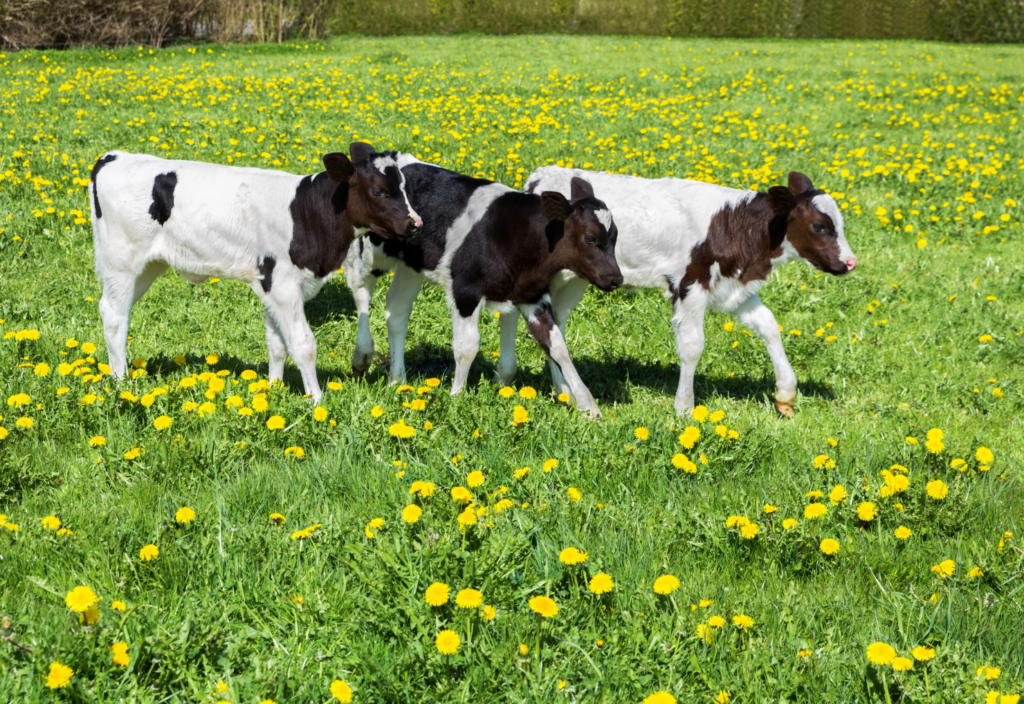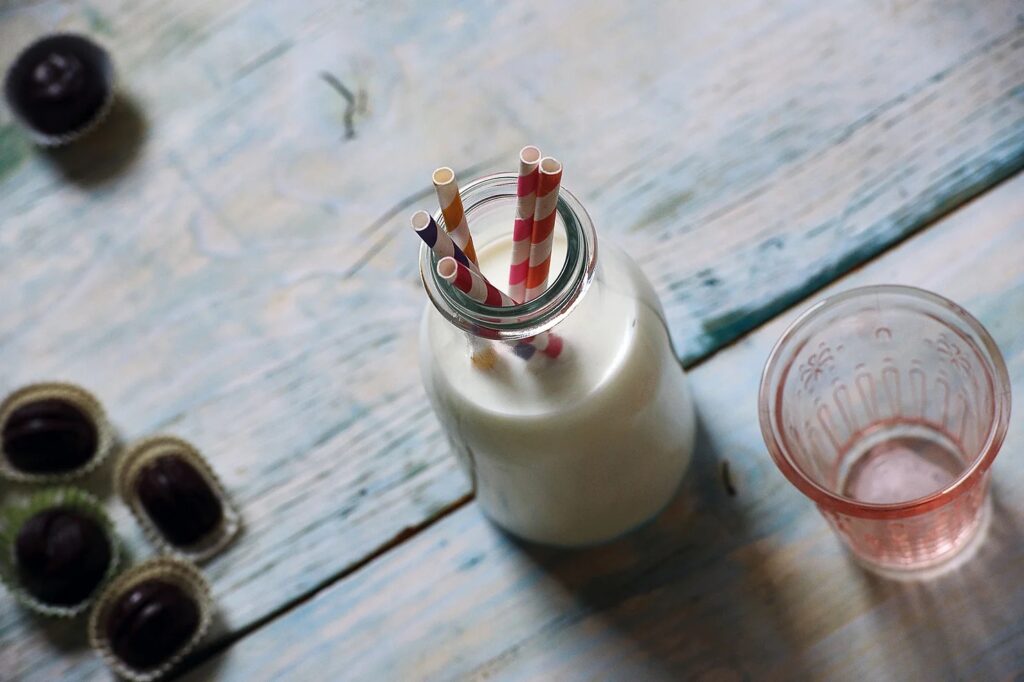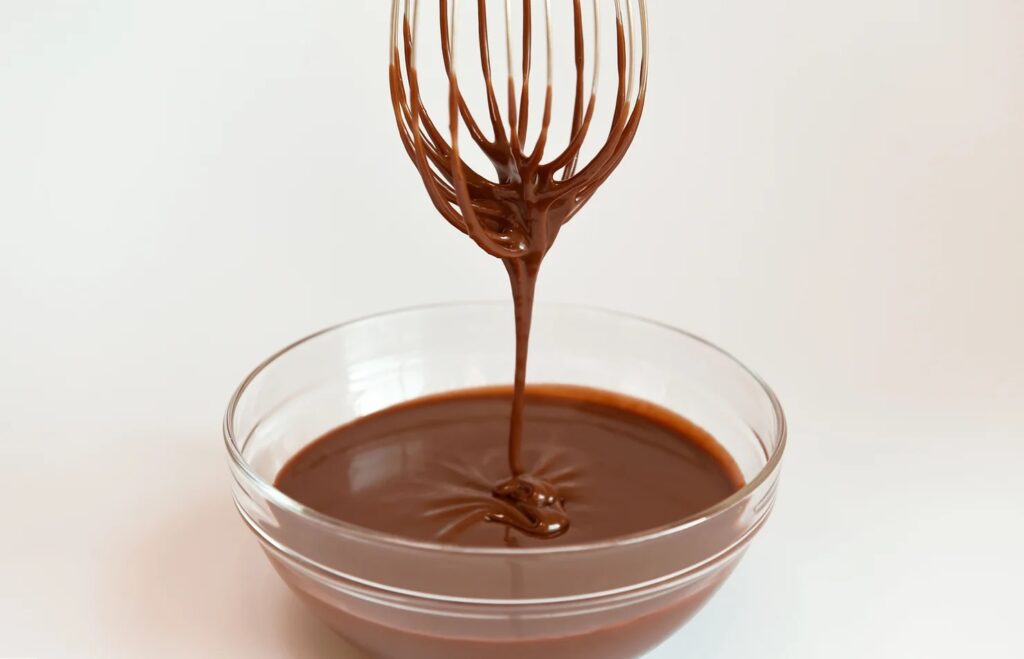If you’ve perused health food stores, homesteading blogs, or even the Woodside Farms’ Market refrigerators within the last few years, then you would likely have noticed the growing interest in having raw milk back on our store shelves and in our homes. But with growing interest has also come growing criticism. Raw milk, however you look at it, still maintains some controversy around it. Let’s take a look at where all this began.

The Controversy: Around the turn of the 20th-century Tuberculosis (TB) rates, along with many other communicable diseases, were on the rise in the United States and around the world. In the US, the death toll for TB alone was around 200-400 per 100,000 persons.1 When TB was found to be due to a bacterial problem (Mycobacterium tuberculosis) rather than a genetic problem, a greater emphasis was placed on irradicating known pathogens. By 1900, it was estimated that nearly 10% of all TB cases in humans, were due to consuming milk from cows infected with a similar strand (Mycobacterium bovis)2. This was also during a time of extreme population growth in urban centers; pushing farms farther out, with greater distance placed between farms and consumers. Milk had a long way to travel and had to pass through many hands, both literally and logistically, leaving more room for pathogenic influence. With growing concern around foodborne illnesses, Chicago became the first city in the US to introduce legislation for cow’s milk pasteurization. With a combined time-temperature process, pasteurization is designed to destroy all human pathogens.3 The claim is that now, because of milk pasteurization, along with many other improved hygiene regulations, TB is thought for the most part to be a disease of the past. It is true that surveys from many different countries have shown the presence of many different types of human pathogens in raw milk, which is why the common assumption that all raw milk contains pathogens persists in the minds of the consumer. However, it’s important to note that the prevalence of pathogens is largely influenced by numerous factors such as farm size, hygiene practices, milking practices, season, etc.4 But even if a cow is considered clinically healthy, food-bourne pathogens can still be transmitted to milk. So, if this is the case, then why are so many people interested in sourcing and consuming raw milk? There are many claims about the health benefits of raw milk, that seem to at least hold anecdotal evidence, but these claims require more scientific testing to shift medical communities and policymakers.

The Claimed Benefits of Keeping Milk Raw:
Nutritional:
Though statistically minor, milk experiences denaturation of whey proteins during pasteurization. Whole raw milk contains quite a bit of protein, around 8 grams per cup and it’s considered a complete protein, which means it contains all 9 essential amino acids.5 Additionally, it is claimed by raw milk enthusiasts that raw milk contains a higher vitamin and mineral ratio compared to pasteurized while maintaining both at an increased bioavailability (meaning your body can absorb them more easily). Luckily, most minerals are very heat stable so if you are still drinking pasteurized milk, you’re likely not missing out on these items due to that process alone. But equally, unfortunately, pasteurized milk tends to be stored, shipped, and sold through a process that allows for more vitamin and mineral loss. So while it may not be solely due to the pasteurization process, pasteurized milk is still likely lacking quite a few vitamins and minerals compared to its raw counterparts.3 Additionally, milk that is intended to stay raw, is often raised in better (cleaner and healthier) production conditions than milk that is intended to be pasteurized and many of its health-giving properties come from this!

Probiotics:
Studies have found that participants in a 12-week study where they went from not consuming any raw dairy products to consuming raw dairy regularly showed a statistically significant increase in their probiotic population, specifically Lactobacilli post-study. This study, however, didn’t limit their scope of observations to the introduction of just raw dairy. Instead, their participants moved on to an organic farm and ate meals that were produced almost exclusively by the farm. These 24 participants, not surprisingly, had demonstrated improvements to their gut microflora. So while there’s a good chance that probiotic improvement was in part brought on by consuming raw milk, more studies need to be done. While you can always work on improving your own probiotic population by taking a pharmaceutical probiotic, it’s important to point out that the world of probiotics is still fairly unregulated. In conclusion, a good method to improve your gut microflora, which has been proven both anecdotally and according to these studies, is to live as close to an organic (or Certified Naturally Grown) farm as possible, to interact with this farm on a regular basis, and to eat as much from this farm as possible.6

Asthma and allergies:
There have been studies that show that raw milk consumption lowers the occurrence of seasonal allergies (hay fever) and asthma in children.7 Again though, this claim also needs more studies behind it. While there does seem to be a correlation between raw milk consumption and a lesser incidence of allergies and asthma in children, raw milk has not been an isolated variable in any studies. Instead, this correlation is likely due to the lifestyle of the individual consuming raw milk. The children in these studies who had been raised on a diet that included raw milk were more likely to be raised on, or in some proximity to, a farm where they were exposed to many known allergens and asthma triggers from an early age. They were also more likely to be consuming a diet of higher-quality produce and fewer processed foods. While it’s plausible that raw milk may have had a positive impact on asthma and allergy development, more studies are required to verify these claims.

Delicious!
While more scientific studies need to be performed to verify many of the health claims of raw milk, one thing that is proven to be true is that raw milk is delicious! Most raw milk programs deliver whole milk, which means it’s higher in cream content (fat) so it’s creamier, tastier, and keeps you full longer than other milk varieties. Below are some of my favorite recipes I’ve used my raw milk for.
Recipes
Chocolate Pudding:
this recipe is from The Pioneer Woman
- Ingredients:
- 2 Large Egg Yolks
- 2 tbsp. Cornstarch
- 2 c. Whole Milk, Divided
- 1/2 c. Sugar
- 1/4 c. Unsweetened Cocoa Powder
- 1/4 tsp. Salt
- 2 tsp. Chocolate Extract (or Vanilla Extract)
- Directions:
- In a medium bowl, whisk the egg yolks for about 60 seconds until light yellow and increased in volume, then whisk in the cornstarch and about 1/4 cup of the milk. Once smooth and incorporated, set aside.
- Place the sugar, cocoa, salt, and remaining milk in a saucepan, and bring to a scald over medium-high heat, which is when the liquid is about 180-190ºF. This is before the mixture comes to a boil, and in this stage, you will see little bubbles start forming on the sides of the pan. Remove the pan from the heat and, while whisking constantly, dribble the hot cocoa into the egg cornstarch mixture very gradually. We are tempering so we don’t scramble the eggs. Pour everything back into the saucepan and cook over medium-high heat, whisking constantly, until the pudding comes to a full boil. Reduce the heat to a simmer and continue whisking for a couple of minutes until the pudding is thickened.
- Remove the pudding from the heat and stir in the chocolate or vanilla extract. Pour the pudding into a bowl and press plastic wrap directly on the surface of the pudding so a skin doesn’t form. Refrigerate for an hour or two until chilled. Serve and enjoy!

Butter:
I know this isn’t exactly a recipe but I love using raw milk to make butter! Here’s a great step-by-step how-to from Feast and Farm
- Separate your milk from your cream. I loved this video for a super easy how-to on that: https://www.youtube.com/watch?v=KiobdoXwyVs
- In the bowl of a food processor fitted with a blade, add the cream and process on high until the buttermilk separates from the butter. About 5 to 6 minutes. If you use a jar or hand mixer, expect this process to take longer.
- Transfer the butter to a colander. You can save the buttermilk if you would like.
- Squeeze the butter and get out as much of the buttermilk as possible. Rinse under cold water, turning and mashing the butter until the water runs clear.
- Transfer the butter to a bowl or onto the counter and add salt. If using a different salt (like table salt) use half as much and taste as you go until your butter is salted to your taste.
- Transfer the butter to an air-tight container for up to one month.

Mozzarella:
Recipe from From Scratch Farmstead
- Ingredients:
- 1 gallon fresh, good milk
- ½ cup apple cider vinegar
- Rennet*
- 2-3 tsp salt
- unchlorinated water
*Use recommended dose or slightly above the recommended dose. For mozzarella, I have had good results using a slightly higher ratio than what is listed on the packaging.
- Directions:
- Pour cold milk into a stock pot. Make sure your milk is COLD to start! Adding acidity directly to milk that is too warm will run the risk of curdling it.
- Dilute vinegar (or lemon juice) in 2 cups of unchlorinated water. Pour into the cold milk and stir in briskly for a minute to acidify the milk.
- Warm the acidic milk slowly to 90° F on a low-med stovetop. Stir regularly and be sure to not heat the milk too quickly to prevent curdling.
- While milk is warming, dissolve rennet in ¼ cup unchlorinated water. I use about ¼ cup of unchlorinated water per gallon of milk. Break up tablets as needed and stir until fully dissolved in water.
- Once acidic milk has reached 90°, remove from heat and pour in dissolved rennet. Stir immediately and thoroughly for 1 minute. Then place a cover on stock pot and let sit undisturbed until a clean break is achieved – approximately 15-30 minutes. Apply low heat as needed or wrap the pot in towels to maintain 90°.
- While waiting for a clean break: 1) fill a large bowl about ½ full with cold water and stir in 2-3 tsp of salt until dissolved – then place in the fridge to chill, and 2) fill a medium saucepan about 2/3 full with warm water.
- After you have a clean break, slice the formed curd into ¾ – 1-inch cubes using a long-bladed knife. Slice top to bottom and left to right vertically, and also do your best to slice horizontally in ¾ – 1-inch increments. Any large curd chunks missed with the knife can be made smaller during stirring.
- Stir the cubed curd with a wooden spoon for about 15 minutes. The curd will release its whey during this time and you’ll observe the edges of the curd going from sharp to rounded. Once the curd has the consistency of a poached egg, you are ready to move on.
- Scoop the curd into waiting colander atop a large bowl to catch the whey. If the holes of your colander are too large, you might consider lining it with a cheesecloth to hold the curd. Optional – Pull curd toward the center of the colander with a curd spoon to remove excess whey. Perform this technique around the outside of the curd keeping the curd intact. Let curd rest in a colander for 15-30 minutes until curd is knit together.
- While waiting, heat hot water bath in saucepan to 160-180°.
- Once you have one solid curd, cut it into thick slices that will be used to form your balls of mozzarella cheese. Place a couple of slices of curd into 160-180° hot water bath. Wait 3-5 minutes.
- After waiting attempt a “stretch test” by removing a slice of curd from the hot water bath and pulling it apart slowly. The cheese should stretch freely. If it does not, place it back in the hot water bath for another minute or so and try again.
- Remove one slice of cheese at a time from the hot water bath shaping it into a mozzarella ball. Similar to kneading bread, work the ball with your hands tucking it back within itself establishing layers throughout the cheese. Work each ball for a short period of time, form ball into final shape, and place in waiting cold water bath with salty brine.
- Repeat steps 11-13 until all your curd is turned into fresh mozzarella balls.
- Place cold water bath back in the fridge for a couple of hours to continue to chill down the mozzarella. Then remove the mozzarella from the cold water bath and store it in a container.

Crock-pot yogurt from From Scratch Farmstead
- Ingredients:
- half-gallon of milk (whole and organic recommended but any dairy milk will work)
- ½ cup starter culture (either ½ cup of yogurt from your previous batch or ½ cup store-bought yogurt with the only ingredients being milk and live and active cultures)
- Directions:
- Pour half gallon of milk into crockpot and turn on LOW for 2.5 hours*
- After 2.5 hours turn off/unplug and let sit undisturbed for 3 more hours
- After 3 hours, remove lid and quickly stir in ½ cup of starter culture. Replace lid and wrap with a couple of towels to insulate.
- Let sit for 8-10 hours or overnight.**
- Store in mason jars or containers of choice in the fridge.
- Notes:
- *I like to set a timer for the 2.5 and 3 hour-intervals. For example, if I start my yogurt at 3 pm, I set a timer for 5:30 pm and 8:30 pm. At 5:30 I turn my crock pot off and at 8:30 I stir in the ½ cup of yogurt and insulate with towels.
- **My favorite way to do the timing of yogurt is to either start my yogurt early in the morning and then the yogurt will be finished before going to bed that night. Or, beginning my yogurt in the afternoon and it will be finished when I wake up the following morning.


Works Cited:
3. Lucey JA. Raw Milk Consumption. Nutr Today. 2015;50(4):189-193. doi:10.1097/NT.0000000000000108
